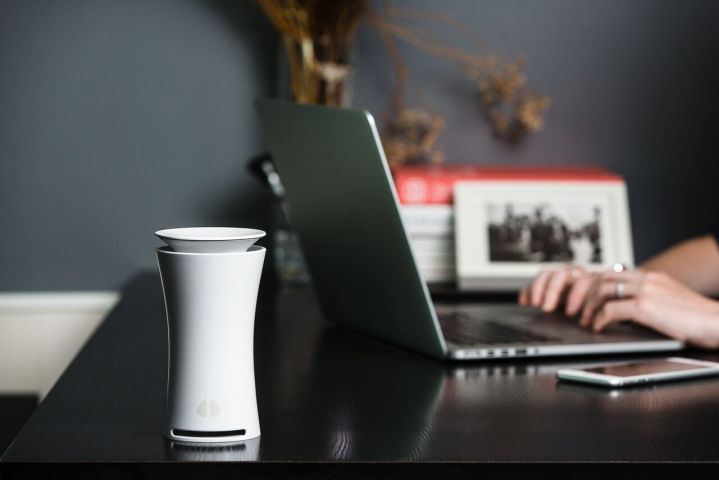
uHoo has separate sensors, rather than just a one-size-fits-all sensor, for carbon dioxide (CO2), carbon monoxide, ozone, air pressure, volatile organic compounds (like those in paint and home cleaning products), temperature, dust, and humidity. When you set it up, it reads your air and delivers a report via Wi-Fi to the cloud which then passes it on to an associated free iOS or Android smartphone app. Because the apps stores the information in the cloud you can monitor readings over time.
You could just put one uHoo in a central location in your home or business. The smartphone app can manage the data from multiple uHoo sensors. It’s also easy to imagine that, especially if the initial levels of one or more substances were bothersome, you might want sensor units for several areas, especially bedrooms, kitchens, and garages. Also, if you have relatives anywhere in the world you can equip them with uHoo detectors for their homes and monitor their air quality from a single
It’s important to realize that the uHoo detector doesn’t do anything about bad air, just as a smoke detector doesn’t put out a fire. Remedying air quality problems calls for different solutions depending on the problem. But provided it works as promised, what the uHoo does do is detect airborne substances, many of which are odorless, that you would never otherwise know were there.
Editors' Recommendations
- Blink Mini 2 vs. Nest Cam (Indoor): Which is the better affordable security camera?
- Ikea’s new Dajlien home fitness collection features portable air purifier, much more
- Google Home adds support for Nest Cam Indoor
- Is an air quality monitor worth adding to your home?
- Aqara launches U100 smart lock with full Apple HomeKit support




